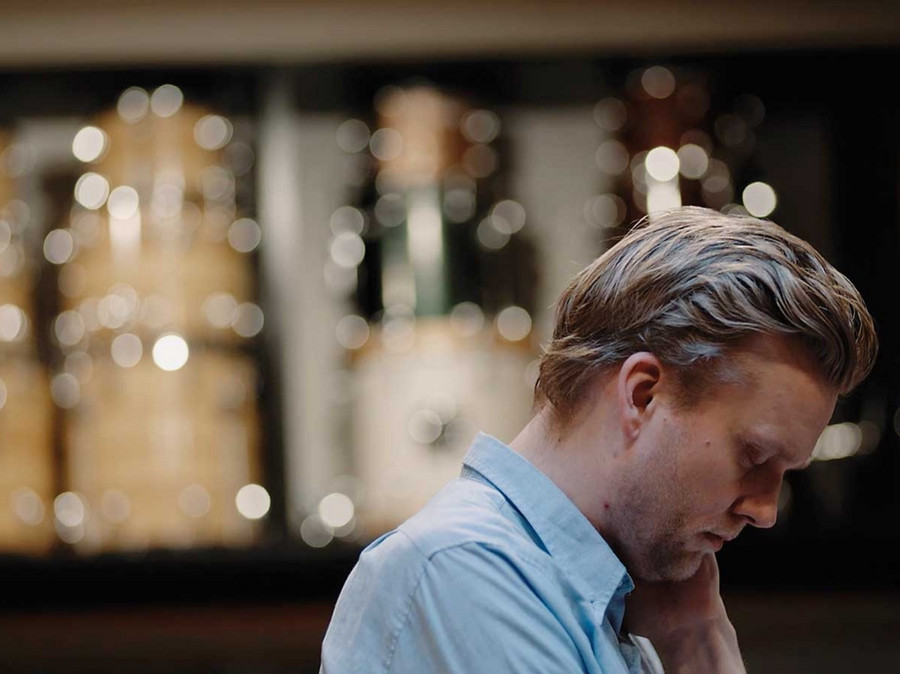Creating music for the inner ear
"The beauty is that everyone will hear something different," Niels Lyhne Løkkegaard says.
"We all know how it is to have a song stuck in our head. Everyone can imagine music, everyone can hear something for the inner ear. And I want to make some kind of music that occurs in that meeting with the listener, so the listener in a way becomes the creator. The ultimate user involvement," Niels Lyhne Løkkegaard says bout his new artistic research project (AR) at the Rhythmic Music Conservatory.
Silent music that unfolds exclusively to the listener's inner ear may have a sound of April Fool's. But artistically, the artistic research project draws lines to several predecessors in experimental music and it is in direct extension of Niels Lyhne Løkkegaard's own exploration of what we understand as music, listening and sound. Just as we greatly recognize reality through narratives, Løkkegaard investigates whether tales about musical works can form music for the listener's inner ear, and if the story of the work can constituate the actual work.
CAN NOT BE WRONG
For a number of years, as a composer and sound artist, he has tried to influate the listener's understanding of music. Most recently in the 'Sound X Sound' series, where he through multiplying sounds explores sound overload with music for example 9 pianos, 18 clarinets and 16 triangles.
"I'm interested in what kind of power structures there are in music. Who is entitled to exercise music, who is entitled to create music. I would like to spread it out and say: Everyone is entitled!" Niels Lyhne Løkkegaard explaines.
"In the encounter with music, many have probably tried to go to a concert and maybe be ashamed of their experience because they sense that the side man has better understanding of it. These feelings of shame and insecurity and if you are entitled to your own experience, is what I would like to question. When the music takes place for the inner ear, as it makes sense for the individual, the listening experience is also unassailable and devoid of shame - a meeting with music that can not be wrong. "
A NEW LANGUAGE AS A TOOL
To compose his work for the inner ear, Niels Lyhne Løkkegaard will first create a language that is sound-descriptive and at the same time so wide that everyone can access it:
"You usually say that music is where the language ends, and I turn it around and describe everything with words. You must be able to read and understand Danish, but the language must be so cleansed of prerequisites that both a child, a sailor and a music professor can read one of the works and hear something - a project with an utopian sound. "
The language's fixed descriptions of sound will also be used as a way to optimize and become better at looking into your own practice as a composer. Or as a specific tool in teaching contexts.
"If a student is to compose for two violins, but do not know how to write music for a violin, then I can say: You can imagine a piece of music and try to write it down as a story. Just describe what's happening. When it is read out loud, we imagine the music that already exists in our imaginary world. Then we can try to play it and interpret what has just been read up. And the person who could not write music for violin has suddenly written a piece for violin," Niels Lyhne Lykkegaard explains.
He expects the AR-project to turn into a range of books with audio descriptions and written works for the inner ear that can be performed for an audience via a big screen. Or published on social media, such as a piece for string quartet on Twitter.
The project 'Music For The Inner Ear' is supported by the Danish Ministry of Culture and is expected to be completed in late 2018.
Read more about the project in Niels Lyhne Løkkegaards blog.
